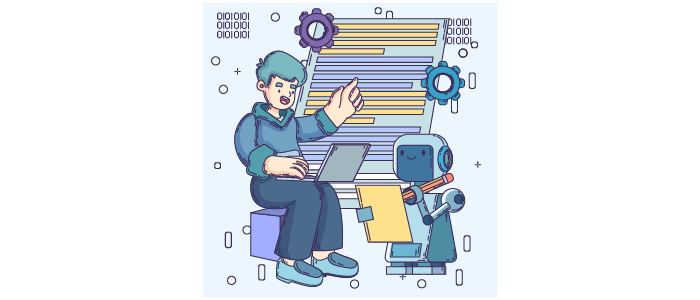Website designers are increasingly utilizing AI to enhance various aspects of the design and development process. Here are several ways in which AI is being integrated into website design.
Automated Layout Generation: AI can assist in generating website layouts based on design principles, user preferences, and content requirements. Designers can input basic information, and AI tools can provide suggestions for grid systems, colour schemes, and placement of elements.
Responsive Design: AI can help ensure websites are responsive across various devices and screen sizes. AI can automatically adapt the layout by analyzing the content and structure to provide a consistent and user-friendly experience on different platforms.
Personalization: AI can analyze user behaviour and preferences to provide personalized experiences. Designers can use AI to dynamically adjust content, images, and layouts based on each user’s interactions with the website.
Content Generation: AI-powered content generators can assist in creating website copy, blog posts, product descriptions, and more. While not a replacement for human creativity, these tools can help generate initial drafts or provide ideas for content.
Image Optimization: AI can optimize images for web usage, ensuring fast loading times without compromising quality. It can automatically compress and resize images while maintaining visual appeal.
User Experience Enhancement: AI can analyze user interactions with a website and provide insights into how to improve the user experience. This can include identifying areas where users drop off, suggesting navigation improvements, and optimizing calls to action.
Chatbots and Customer Support: Chatbots powered by AI can provide instant customer support through websites. They can answer common queries, guide users to relevant information, and even complete simple transactions.
A/B Testing: AI can assist A/B testing by analyzing user responses to different design elements. Designers can gather insights on which variations of design elements are more effective in achieving desired outcomes.
Predictive Analytics: AI can analyze data to predict user behaviour and preferences, helping designers make informed decisions about design elements, content placement, and user flows.
Automated Code Generation: While still in its early stages, AI-assisted code generation tools can help developers quickly create basic code structures based on design mockups. This can streamline the development process.
Font Selection and Typography: AI can suggest font pairings and typography styles that complement the overall design theme and enhance readability.
Colour Palette Recommendations: AI can analyze images, content, and design preferences to suggest appropriate colour palettes that align with the website’s purpose and target audience.
Accessibility Compliance: AI can scan websites for accessibility issues and suggest improvements to ensure compliance with web accessibility standards.
Data Visualization: AI can assist in creating interactive and visually appealing data visualizations that effectively communicate information to users.
It’s important to note that while AI can significantly enhance the design process, human creativity and expertise remain crucial. AI tools are best used as aids to assist designers in making informed decisions and streamlining certain tasks rather than replacing the role of designers entirely.
Reach out to us at info@paypercampaign.com





